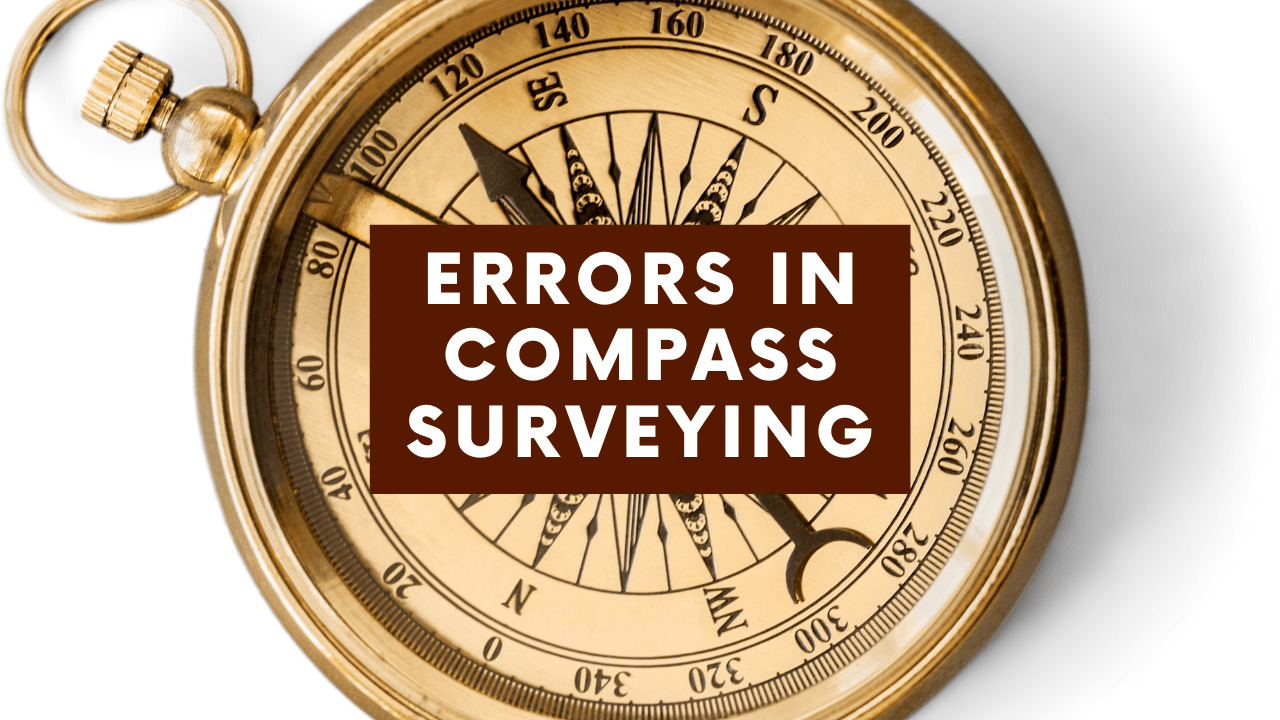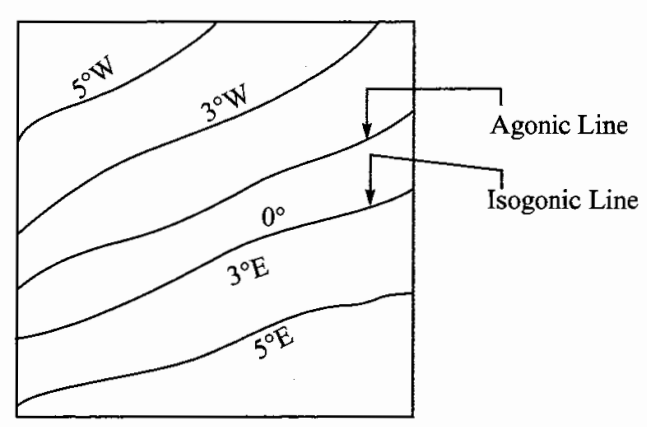In this article, the discussion is about the errors that can take place during compass surveying. Firstly, we will discuss the errors and then how to resolve or precautions can be taken to ignore such errors.
The following are the kinds of errors that may occur while taking readings during compass survey.
- Instrumental Errors
- Errors due to manipulation and sighting
- Natural Errors
Table of Contents
1)Instrumental Error
Instrumental errors occur due to faulty adjustments of the instruments. The reasons for instrumental errors are mentioned below:
- The needle of the compass may not be perfectly straight.
- The pivot point may be eccentric.
- The ring’s graduations may not be uniform.
- The pivot point is dull.
- The needle is sluggish due to magnetism.
- The needle neither moves horizontally nor moves freely on the pivot due to the dip of a needle.
- The sight vane may not be vertical.
2)Errors due to manipulation and sighting
They are also known as personal errors and these errors are due to the following reasons that are mentioned below:
- Due to inaccurate centering of the compass over the station.
- Due to inaccurate leveling of compass box when the instrument is set up.
- Improper bisection of ranging rods at the station.
- By taking wrong readings through the graduations of the prism.
- Carelessness in recording the observed readings.
- Due to any magnetic object nearby.
3)Natural Errors
These types of errors may occur due to various natural causes which affect the working of the compass. There are some reasons:
- Due to magnetic changes in the atmosphere like on a cloudy or stormy day.
- The magnetic declination may vary.
- Local attraction that can be due to proximity steel structures, electric lines.
Here we discuss some Natural errors that how can they occur with a brief description.
Types of Natural Errors in Compass Surveying
- Magnetic Declination
- Local Attraction
1)Magnetic Declination
The horizontal angle between the magnetic meridian and the true meridian is called magnetic declination.
- Declination west
It occurs when the north end of the magnetic needle is pointed towards the west side of the true meridian.
- Declination east
It occurs when the north end of the magnetic needle is pointed towards the east side of the true meridian.
-
Isogonic lines
The lines that are passing through the points have equal magnetic declination.
-
Agonic lines
The lines that are passing through the points have zero magnetic declination.
Variation of Magnetic Declination
Magnetic declination at a place is not constant. The variation in it occurs due to the following reasons.
1)Secular Variation
- In this type, the magnetic behavior changes and it acts like a pendulum with respect to the true meridian.
- It occurs after every 100 years when it swings from one direction to the opposite direction, and the declination varies.
2)Annual Variation
- This variation that occurs due to the rotation of the earth, in an elliptical path during the sun is called Annual Variation.
- Its amount of variation is about 1 to 2 minutes.
- It’s a yearly variation in magnetic declination.
3)Diurnal Variation
- This variation that occurs due to the rotation of the earth, on its own axis in 24 hours is called Diurnal Variation.
- Its amount of variation is about 3 to 12 minutes.
- It’s a daily variation in magnetic declination.
- This variation is more in summers and less in winters.
- This can also change from year to year.
4)Irregular Variation
- The variation that occurs due to natural causes happened suddenly like earthquakes and volcanic eruptions etc.
2)Local Attraction
When the magnetic needle is freely suspended or pivoted, it indicated the north direction but when the needle comes near any magnetic substance like iron, steel and electric wires, etc. It is found to get deflected from its true direction.
This disturbance that occurs due to the presence of a magnetic substance is known as Local Attraction.
Detection of Local Attraction
The presence of local attractions at any station can be detected by observing the fore and back bearing of the line. If the difference between the fore and back bearing is 180o then both end stations are free from the local attraction. If the difference is not equal to 180o then it may be due to the following reasons.
- Error in the observation of fore and back bearing.
- The presence of local attractions at either station.
- The presence of local attractions at both stations.
Methods for the correction of Local Attraction
- By calculating the included angles at the affected stations.
- By checking the required corrections, starting from the unaffected bearing.
Method of Application of correction
1)First Method
- The angles of the traverse are calculated from the observed bearing.
- After that, an angular check is applied by which the sum of interior angles should be equal to this equation.
Where n = No. of sides of traverse
- If it’s not applicable then the total error is equally divided among all the angles of the traverse.
- This method is laborious and is not generally employed.
2)Second Method
- In the second method, there is no need to calculate the angles of the traverse.
- In this method, the unaffected line is first detected.
- Then by the reference of this line, the bearing of other affected lines is corrected.
- This method is easy to understand and generally applied for correction.
Precautions for Compass Surveying
These are some of the precautions that can be useful while conducting a compass traverse.
- The centering and the leveling should be done perfectly.
- The readings should be taken along the line of sight, not from any other side.
- Try to select stations that are far away from the magnetic effects.
- Observer should also avoid taking any magnetic substance.
- To stop the rotation of the graduated ring, the brake pin should be pressed gently not suddenly.







